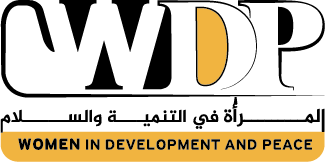Women in Development and Peace – Yomna Ahmed
In recent times, women have become one of the most active elements in social, political, and economic life in Yemen. This has made their increased participation in the field of media highly significant. Through various media outlets, including television, radio, press, and social media, Yemeni women have been able to shed light on their own issues and other societal issues that concern them, leading to increased societal awareness. The participation of Yemeni women in various media platforms has facilitated their expression of opinions, concerns, and aspirations, thereby enhancing their voice and empowering them to make important decisions on social and political levels. Thanks to the active participation of Yemeni women in the media, attention has been drawn to the injustices and discrimination they face, and pressure has been exerted to bring about positive changes in policies and laws related to women’s rights.
However, Yemeni women still face many challenges in the field of media, including gender discrimination and the limited societal perception of women working in this field.
In light of this, Yemen Information Center’s Information and Opinion Survey Unit conducted a survey titled “Women in Media in Yemen” to gauge the opinions of a sample of the Yemeni population regarding the importance of women’s work in the media in Yemen and the key challenges they face from their perspective.
The survey was conducted on a research sample of 148 individuals, with the majority of participants being females at 72.9%, compared to 27.1% males. The age groups of the participants varied, with 54.2% falling in the youth category aged between 18-25 years, 33.3% in the age group of 26-35 years, 3.8% in the age group of 36-45 years, 2.1% in the age group of 46-65 years, and another 2.1% in the age group above 65 years.
Regarding educational qualifications, the majority of participants held higher degrees at 60.4%, followed by those with bachelor’s degrees at 33.3%. Only 6.3% of the participants were university students.
In terms of geographical distribution, the survey covered ten governorates, namely Sana’a at 62.5%, Taiz at 14.4%, Aden at 6.3%, Al-Hodeidah at 4.2%, and 2.1% each for Dhamar, Hadhramout, Al-Mahwit, Shabwah, Hajjah, and Al-Mahrah, respectively.
Main Results
Initially, 97.9% of the participants in the survey believed that women’s work in the media in Yemen is important, for the following reasons:
- Promoting diversity in the media (95.8%)
- Empowering women (89.6%)
- Enhancing democratic culture and community participation (25%)
- Promoting economic and social development (25%)
- Raising awareness about women’s issues (22.9%)
On the other hand, 2.1% believed otherwise.
100% of the participants agreed that women’s participation in the media in Yemen can contribute to changing the stereotypical image of women in society.
When it comes to opportunities for women in the field of media compared to men, 77.1% of the participants believed that women have the same opportunities as men in this field, while 22.9% believed otherwise.
Regarding the obstacles facing women’s work, the participants in the survey identified the following:[1]
- Gender bias (81%)
- Limited opportunities (68.8%)
- Lack of support (37.5%)
- Cultural and social constraints (27.1%)
The survey participants also believe that steps should be taken by society and relevant organizations to promote women’s participation in the media in Yemen. These steps include:[2]
- Providing support and funding for women-led media projects (93.8%)
- Establishing policies and laws that promote women’s representation in the media (58.3%)
- Enhancing awareness and education (43.8%)
- Creating a work environment that encourages women’s engagement in the field of media (35.4%)
In conclusion, the survey participants agreed that the presence of women in the media in Yemen is an urgent necessity for achieving development and social change. It contributes to highlighting their experiences and voices, promoting their rights and participation in society, and changing the stereotypical image of women.
[1] Multiple-choice question, each answer was analyzed as a separate sample with an estimated percentage of 100%
[2] Multiple-choice question, each answer was analyzed as a separate sample with an estimated percentage of 100%

![المرأة في الاعلام – انجليزي [Recovered] copy copy_Mesa de trabajo 1 copy](https://windap.net/wp-content/uploads/2024/05/المرأة-في-الاعلام-انجليزي-Recovered-copy-copy_Mesa-de-trabajo-1-copy.png)